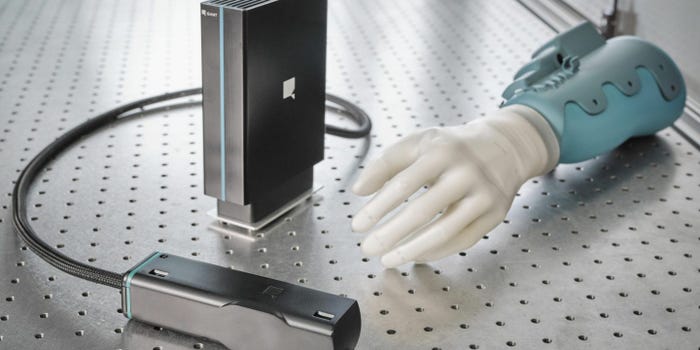Managing a complex IoT network doesn’t have to be complicated.
April 5, 2019

By Dennis Huang
The Internet of Things (IoT) promises huge benefits to enterprises. With the potential to automate processes, capture new insights and keep people and property safer, we should be seeing major IoT investments across every vertical. On the ground though, things have been slower to take hold than many expected. One big barrier: figuring out how to efficiently connect all those IoT sensors and devices.
To date, there is no clear winner among the many IoT radio technologies (Bluetooth Low Energy (BLE), Zigbee, LoRa and others), and arguably good reasons why each of these technologies should continue to exist. But how many enterprises are willing to maintain disparate infrastructure just for IoT? Or worse, multiple, single-purpose networks for each requirement like connected entry?
Like converged management of wired and wireless networks, a physically converged access layer supported by converged access points seems inevitable. Today, emerging wireless technologies can incorporate multiple IoT radios and allow enterprises to operate them alongside Wi-Fi over the same infrastructure. They may just represent the last piece of the puzzle that sees enterprise IoT begin reaching its full potential.
[Internet of Things World is the intersection of industries and IoT innovation. Book your conference pass and save $350, get a free expo pass, or see the IoT architecture speakers at the event.]
The Problem of Overlays
You might think Wi-Fi would be a natural choice for enterprise IoT applications. After all, practically every enterprise already uses Wi-Fi infrastructure. For a variety of reasons though (power constraints, a need for smaller form factors, mismatch between IoT data requirements and high-capacity Wi-Fi connections), Wi-Fi is often not the best radio option for IoT.
Instead, the devices at the core of some of the fastest-growing enterprise IoT trends (smart door locks, wearable staff alert devices) use IoT-optimized technologies like LoRa, BLE or Zigbee. For enterprises deploying these applications, however, that means wrestling with more radio types and infrastructures. Which means taking on:
Redundant overlay networks: How much benefit does a new IoT application need to provide to justify building a new, separate network, with separate wiring, power and security? And where does it end? How many redundant networks should an enterprise expect to keep deploying as they add more IoT applications?
Management complexity: Managing those redundant networks is also painful. It’s the reason many product categories that used to be managed separately (routing and switching, wireless and security) are converging, and as a consequence, perhaps spurring the industry toward consolidation. As a network vendor, if you can’t bring multiple systems under one management, many IT organizations won’t work with you.
Precious physical space: Even if enterprises are willing to consider overlay networks, many simply don’t have or won’t commit the physical real estate to house more network components. If each new IoT technology requires its own gateway and dedicated firewall, and separate switching, powering and cable infrastructure, where are enterprises supposed to put all that equipment?
Together, these issues create a major barrier to wide-scale adoption of enterprise IoT technologies — even when the technologies themselves can yield significant business benefits. As a result, outside of sectors like industrial, the only enterprises deploying IoT today tend to be those with the most to gain or the most to lose.
Take hospitality, one of the few enterprise sectors seeing major IoT investments (in this case, in staff alert systems). Without recent negative press around harassment of hospitality workers, and the new regulations and industry initiatives in response, many of these projects would still likely be stuck in the planning stage.
Rise of Converged APs
Fortunately, the complexities and inefficiencies of the status quo don’t have to persist forever. There is a way forward for enterprise IoT: convergence. Indeed, as enterprises look to do more with less and keep pace with technology change, IT is demanding convergence on many fronts, from unified wired and wireless management to multipurpose data center platforms. In this environment, the conventionally “commoditized” AP is becoming a hotbed of innovation.
In many ways, this is a continuation of longstanding trends, such as APs that support multiple Wi-Fi radio bands. The latest APs push convergence even farther. New technologies like the Ruckus R730, for example, combine dual-band Wi-Fi with embedded BLE and Zigbee radios. Platforms like these will soon allow enterprises to mix and match radio modules for other IoT radio technologies too — all running under the same enclosure, using the same management. All of a sudden, IoT technologies that were previously too complex and expensive now become viable for almost any enterprise.
Addressing Convergence Challenges
Of course, convergence can bring its own issues. Each additional wireless radio technology incorporated into a traditional “Wi-Fi only” AP can add new technological challenges, such as:
Radio frequency (RF) interference: One thing many popular IoT radio standards have in common is that they operate over the 2.4 GHz spectrum — one already crowded with Wi-Fi traffic and interference from microwave ovens, cordless phones and more. Implementing multiple radios sharing the same spectrum, within the same enclosure, without diminishing performance is not simple.
Packet coordination: Running multiple distinct wireless applications over the same infrastructure will require more sophisticated traffic handling.
Antenna design: To improve connections and minimize interference, antennas for the different radios (again, coexisting within the same enclosure) need to be designed with the appropriate spatial separation.
If converged APs are going to break the enterprise IoT logjam, they need to address these and other technology issues. That requires skilled RF and antenna engineering, and sophisticated AP designs built to meet the diverse needs of modern enterprise use cases. Not every vendor has that level of expertise.
Ultimately though, look for converged APs to play a big role in lowering the barriers to enterprise IoT adoption. As more enterprises benefit from IoT applications, they may even find using converged APs to be not just more cost-effective, but more effective, period. After all, even when using separate overlay networks for multiple IoT technologies, the radios still operate in the same airspace. So, they’re still subject to the same RF interference and related issues. Deploying wireless technologies built from the ground up to use multiple radios, instead of trying to solve those problems after the fact, will increasingly make sound business sense.
Dennis Huang, enterprise WLAN and IoT director of Ruckus Networks, has more than 15 years of experience in product development, product marketing, and business development. He specializes in creating enterprise and consumer wireless networking equipment, IoT offerings, and online services.
You May Also Like


.png?width=700&auto=webp&quality=80&disable=upscale)
.png?width=300&auto=webp&quality=80&disable=upscale)


.png?width=300&auto=webp&quality=80&disable=upscale)